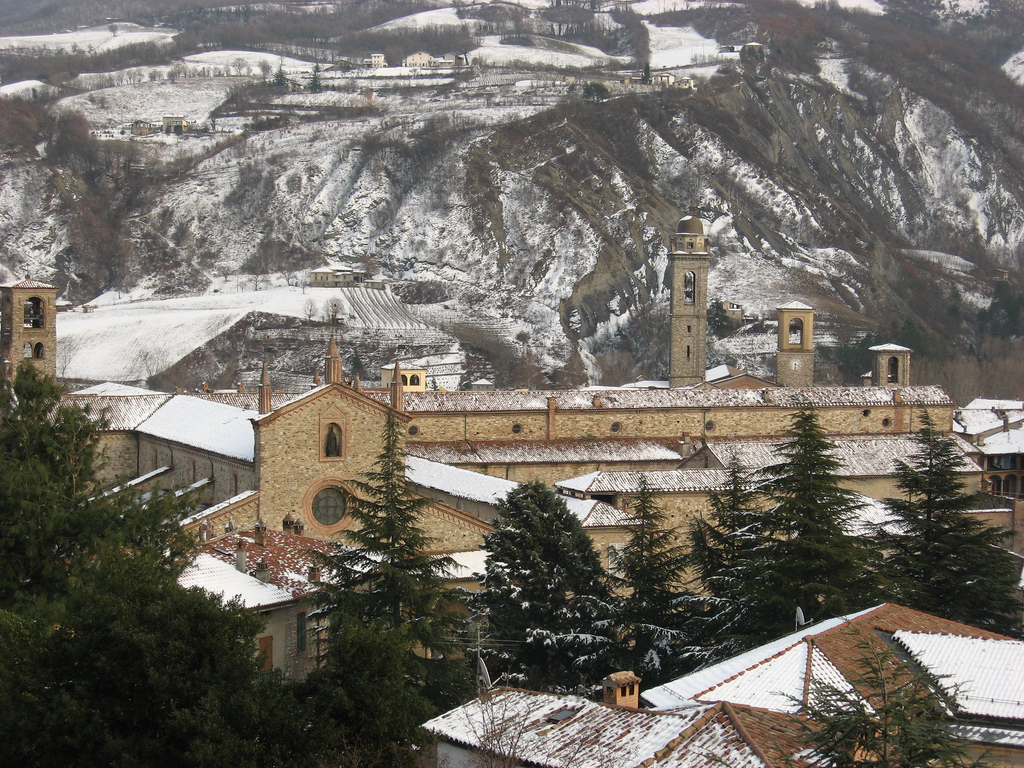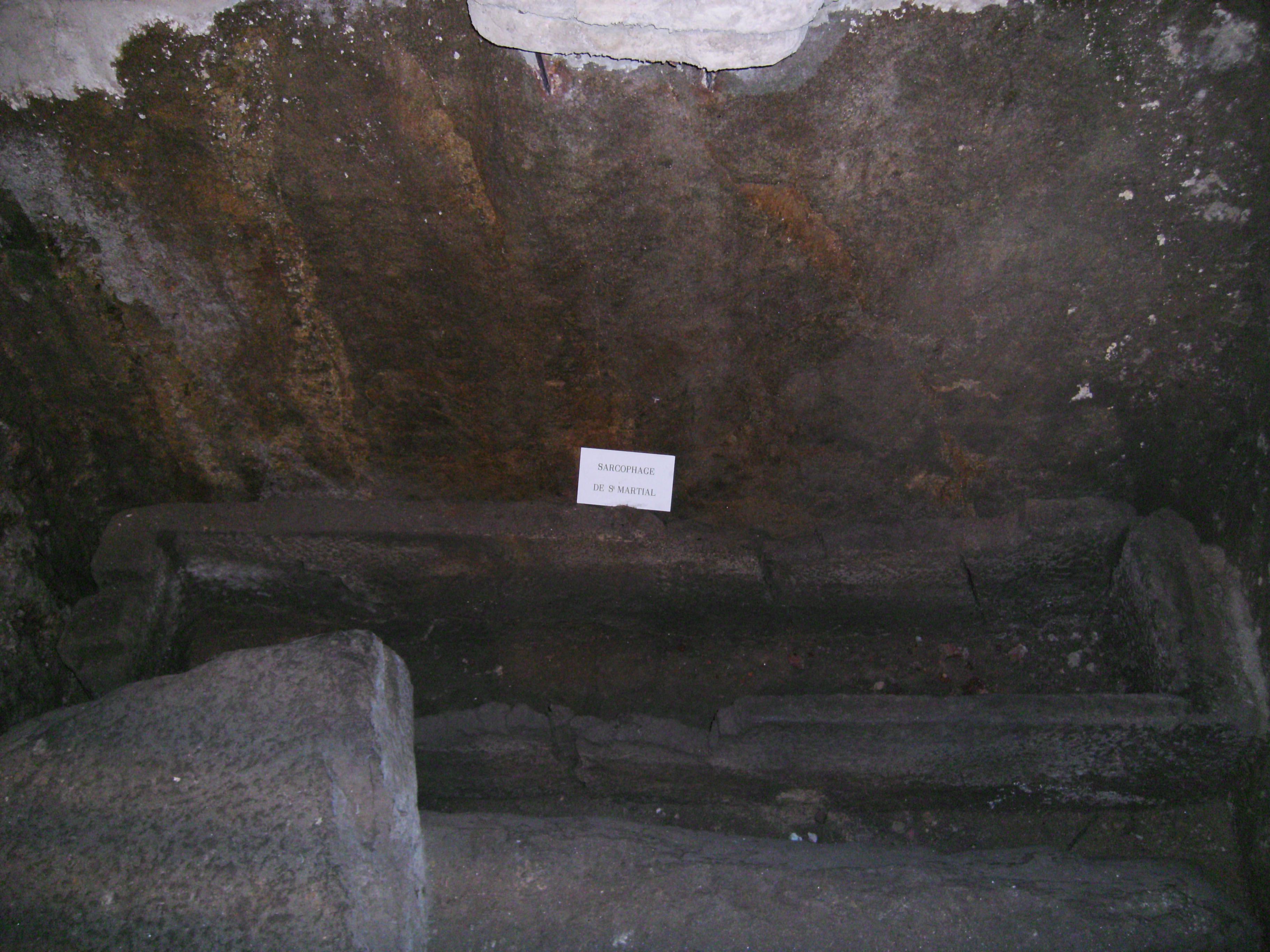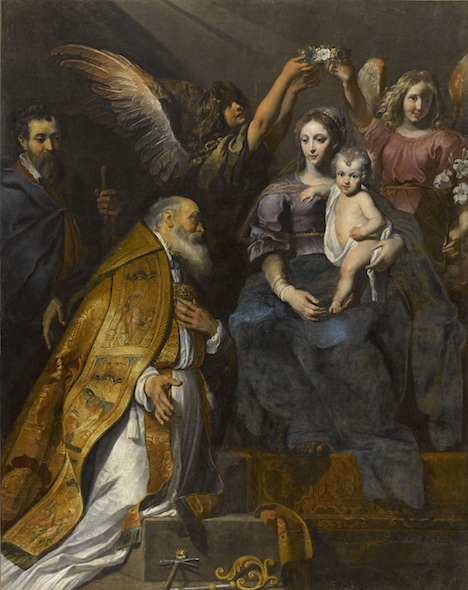|
Saint Aurea Of Paris
Aurea of Paris (died 666; French: ''Sainte Aure''), venerated as Saint Aurea of Paris, was an abbess of Saint Martial in Paris in the seventh century. Dagobert I and Clovis II ruled at the time. Her feast day before the Great East-West Schism of 1054 was universally 4 October, and remains so in the Orthodox Church. The Orthodox Church does not recognise any post-Schism Romanists as saints. The Romanist celebration of her feast was transferred to 5 October following their veneration of St Francis of Assisi. Narrative She appears in works by two writers, St Ouen and Jonas of Bobbio, in their hagiography (saint's life stories) of St Eligius and St Eustace. Both writers state that she was an immigrant to Paris from Syria Syria, officially the Syrian Arab Republic, is a country in West Asia located in the Eastern Mediterranean and the Levant. It borders the Mediterranean Sea to the west, Turkey to Syria–Turkey border, the north, Iraq to Iraq–Syria border, t .... When aroun ... [...More Info...] [...Related Items...] OR: [Wikipedia] [Google] [Baidu] |
Saint Martial
Martial of Limoges (3rd century), whose name is also rendered as Marcial, Martialis, and Marcialis, and is also called "the Apostle of the Gauls" or "the Apostle of Aquitaine," was the first bishop of Limoges. Venerated as a Christian saint, Martial of Limoges is considered to have been canonized Pre-Congregation, and his feast day is on 30 June. He appears on the Limoges coat of arms. Life There is no accurate information as to the origin, dates of birth and death, or the acts of this bishop, although he is said to have come from the "East." According to Gregory of Tours, during the time of the Emperors Decius Pope Fabian sent out seven bishops from Rome to Gaul to preach the Gospel: Gatien to Tours, Trophimus to Arles, Paul to Narbonne, Saturnin to Toulouse, Denis to Paris, Austromoine to Clermont, and Martial to Limoges. According to the Golden Legend, when Martial first went to Limoges as a missionary, he visited the temple, where the priests beat him before having ... [...More Info...] [...Related Items...] OR: [Wikipedia] [Google] [Baidu] |
Paris
Paris () is the Capital city, capital and List of communes in France with over 20,000 inhabitants, largest city of France. With an estimated population of 2,048,472 residents in January 2025 in an area of more than , Paris is the List of cities in the European Union by population within city limits, fourth-most populous city in the European Union and the List of cities proper by population density, 30th most densely populated city in the world in 2022. Since the 17th century, Paris has been one of the world's major centres of finance, diplomacy, commerce, culture, Fashion capital, fashion, and gastronomy. Because of its leading role in the French art, arts and Science and technology in France, sciences and its early adoption of extensive street lighting, Paris became known as the City of Light in the 19th century. The City of Paris is the centre of the Île-de-France region, or Paris Region, with an official estimated population of 12,271,794 inhabitants in January 2023, or ... [...More Info...] [...Related Items...] OR: [Wikipedia] [Google] [Baidu] |
Dagobert I
Dagobert I (; 603/605 – 19 January 639) was King of the Franks. He ruled Austrasia (623–634) and Neustria and Burgundy (629–639). He has been described as the last king of the Merovingian dynasty to wield real royal power, after which the Mayor of the palace rose as the political and war leader. Dagobert was the first Frankish king to be buried in the royal tombs at the Basilica of Saint-Denis. Rule in Austrasia Dagobert was the eldest son of Chlothar II and Haldetrude (575–604) and the grandson of Fredegund. Chlothar had reigned alone over all the Franks since 613. In 622, Chlothar made Dagobert king of Austrasia, almost certainly to bind the Austrasian nobility to the ruling Franks. As a child, Dagobert lived under the care of the Carolingian dynasty forebears and Austrasian magnates, Arnulf of Metz and Pepin of Landen. Chlothar attempted to manage the unstable alliances he had with other noble families throughout much of Dagobert's reign. When Chlothar granted Aus ... [...More Info...] [...Related Items...] OR: [Wikipedia] [Google] [Baidu] |
Clovis II
Clovis II (633 – 657) was King of the Franks in Neustria and Burgundy, having succeeded his father Dagobert I in 639. His brother Sigebert III had been King of Austrasia since 634. He was initially under the regency of his mother Nanthild until her death in her early thirties in 642. Nanthild's death allowed Clovis to fall under the influence of the secular magnates, who reduced the royal power in their own favour; first Aega and then Erchinoald. The Burgundian mayor of the palace Flaochad used him to lure his rival, Willebad, to a battle in Autun, in which Willebad was killed. Background Clovis married Balthild, an Anglo-Saxon sold into slavery in Gaul. She had been owned by the Neustrian mayor of the palace, Erchinoald, but then attracted the interest of the king. They had three sons, who all became kings after his death. The eldest, Chlothar, succeeded him and his second eldest, Childeric, was placed on the Austrasian throne and eventually also succeeded in N ... [...More Info...] [...Related Items...] OR: [Wikipedia] [Google] [Baidu] |
Calendar Of Saints
The calendar of saints is the traditional Christian method of organizing a liturgical year by associating each day with one or more saints and referring to the day as the feast day or feast of said saint. The word "feast" in this context does not mean "a large meal, typically a celebratory one", but instead "an annual religious celebration, a day dedicated to a particular saint". The system rose from the early Christian custom of commemorating each martyr annually on the date of their death, their birth into heaven, a date therefore referred to in Latin as the martyr's ''dies natalis'' ('day of birth'). In the Eastern Orthodox Church, a calendar of saints is called a ''Menologion''. "Menologion" may also mean a set of icons on which saints are depicted in the order of the dates of their feasts, often made in two panels. History As the number of recognized saints increased during Late Antiquity and the first half of the Middle Ages, eventually every day of the year had at l ... [...More Info...] [...Related Items...] OR: [Wikipedia] [Google] [Baidu] |
Francis Of Assisi
Giovanni di Pietro di Bernardone ( 1181 – 3 October 1226), known as Francis of Assisi, was an Italians, Italian Mysticism, mystic, poet and Friar, Catholic friar who founded the religious order of the Franciscans. Inspired to lead a Christianity, Christian life of poverty, he became a Mendicant, beggar and itinerant preacher. One of the most venerated figures in Christianity, Francis was canonized by Pope Gregory IX on 16 July 1228. He is commonly portrayed wearing a brown Religious habit, habit with a rope tied around his waist, featuring three knots symbolizing the evangelical counsels of poverty, chastity, and obedience. In 1219, he went to Egypt in an attempt to convert the sultan al-Kamil and put an end to the conflict of the Fifth Crusade. In 1223, he arranged for the first live nativity scene as part of the annual Christmas celebration in Greccio. According to Christian tradition, in 1224 Francis received the stigmata during the Vision (spirituality), apparition of ... [...More Info...] [...Related Items...] OR: [Wikipedia] [Google] [Baidu] |
Audoin (bishop)
Audoin (; AD 609 – on 24 August 684), venerated as Saint Audoin, was a Frankish bishop, courtier, hagiographer and saint. He authored ''Vita Sancti Eligii'' which outlines the life and deeds of Eligius, his close friend and companion in the royal court and the Church. Life Audoin came from a wealthy aristocratic Frankish family who held lands in the upper Seine and Oise valleys. His father was Authaire (Audecharius). Audoin was a first cousin of Agilbert, bishop of the West Saxons. He spent his childhood at Ussy-sur-Marne, and was then sent to be educated at the Abbey of Saint-Médard de Soissons. From there he went to the court of Chlothar II (d.629), where training both military and literary was given to young noblemen, he served Dagobert I as one of his referendaries (administrators). [...More Info...] [...Related Items...] OR: [Wikipedia] [Google] [Baidu] |
Jonas Of Bobbio
Jonas of Bobbio (also known as Jonas of Susa) (Sigusia, now Susa, Italy, 600 – after 659 AD) was a Columbanian monk and a major Latin monastic author of hagiography. His ''Life of Saint Columbanus'' is "one of the most influential works of early medieval hagiography."O'Hara, Alexander. ''Jonas of Bobbio and the Legacy of Columbanus'', Oxford Studies in Late Antiquity (New York) Biography  Jonas was born in Susa, Piedmont. In 618, Jonas arrived at the Bobbio Abbey, Abbey of St. Columbanus at Bobbio in the province of Pavia. He wa ...
Jonas was born in Susa, Piedmont. In 618, Jonas arrived at the Bobbio Abbey, Abbey of St. Columbanus at Bobbio in the province of Pavia. He wa ...
[...More Info...] [...Related Items...] OR: [Wikipedia] [Google] [Baidu] |
Saint Eligius
Eligius (; 11 June 588 – 1 December 660), venerated as Saint Eligius, was a Frankish goldsmith, courtier, and bishop who was chief counsellor to Dagobert I and later Bishop of Noyon–Tournai. His deeds were recorded in ''Vita Sancti Eligii'', written by his friend Audoin of Rouen. Born into a Gallo-Roman family, Eligius found success as a goldsmith at the Merovingian royal court of Clotaire II and served as chief counsellor to Dagobert I until Dagobert's death in 639. Under the subsequent regency of Nanthild, the queen consort, Eligius was ordained a priest and campaigned against simony in the Church. Appointed Bishop of Noyon–Tournai in 642, he founded many monasteries and churches while working to convert the pagan population of Flanders to Christianity. Despite his background as a goldsmith, Eligius became increasingly ascetic during his time at the royal court and used his influence to ransom captive slaves and care for the poor. A legend emerged of him once he ... [...More Info...] [...Related Items...] OR: [Wikipedia] [Google] [Baidu] |
Saint Eustace
Saint Eustace (Latinized Eustachius or Eustathius, Greek Εὐστάθιος Πλακίδας ''Eustathios Plakidas'') is revered as a Christian martyr. According to legend, he was martyred in AD 118, at the command of emperor Hadrian. Eustace was a pagan Roman general, who converted to Christianity after he had a vision of the cross while hunting. He lost all his wealth, was separated from his wife and sons, and went into exile in Egypt. Called back to lead the Roman army by emperor Trajan, Eustace was happily reunited with his family and restored to high social standing, but after the death of Trajan, he and his family were martyred under Hadrian for refusing to sacrifice to pagan Roman gods. Eustace was venerated in the Byzantine Church from at least the 7th century. His veneration is attested for the Latin Church for the 8th century, but his rise to popularity in Western Europe happened in the high medieval period, during the 12th to 13th centuries. There are many versions ... [...More Info...] [...Related Items...] OR: [Wikipedia] [Google] [Baidu] |
Syria
Syria, officially the Syrian Arab Republic, is a country in West Asia located in the Eastern Mediterranean and the Levant. It borders the Mediterranean Sea to the west, Turkey to Syria–Turkey border, the north, Iraq to Iraq–Syria border, the east and southeast, Jordan to Jordan–Syria border, the south, and Israel and Lebanon to Lebanon–Syria border, the southwest. It is a republic under Syrian transitional government, a transitional government and comprises Governorates of Syria, 14 governorates. Damascus is the capital and largest city. With a population of 25 million across an area of , it is the List of countries and dependencies by population, 57th-most populous and List of countries and dependencies by area, 87th-largest country. The name "Syria" historically referred to a Syria (region), wider region. The modern state encompasses the sites of several ancient kingdoms and empires, including the Eblan civilization. Damascus was the seat of the Umayyad Caliphate and ... [...More Info...] [...Related Items...] OR: [Wikipedia] [Google] [Baidu] |
666 Deaths
Year 666 (Roman numerals, DCLXVI) was a common year starting on Thursday of the Julian calendar. The denomination 666 for this year has been used since the early medieval period, when the Anno Domini calendar era became the prevalent method in Europe for naming years. Events By place Byzantine Empire * Emperor Constans II grants the request of Bishop Bishop of Ravenna#Archdiocese of Ravenna (6th century – 1947), Maurus of Exarchate of Ravenna, Ravenna, allowing the city to consecrate its bishop without approval from Rome (approximate date). Europe * Duke Lupus of Friuli revolts against King Grimoald I of Benevento, Grimoald I, with allied Avars (Carpathians), Avars. Grimoald takes and devastates Friuli, tracks down Lupus's son Arnefrit of Friuli, Arnefrit (allied with the Slaves), and beats him and kills him in battle at the castle of Nimis. Grimoald appoints Wechtar of Friuli, Wechtar as the new Duchy of Friuli, duke of Friuli. Asia * China, Chinese Buddhist m ... [...More Info...] [...Related Items...] OR: [Wikipedia] [Google] [Baidu] |







